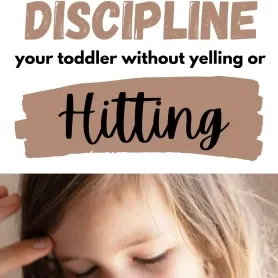Teaching children healthy boundaries and respectful behavior is vital, but finding effective discipline strategies can be challenging. Whether you’re looking for positive discipline strategies for kids and teens, conscious discipline strategies that promote emotional well-being, or specific classroom discipline_strategies, this guide covers proven approaches for every age group. Read on to explore the top 9 techniques that make discipline manageable and effective for both parents and teachers.
What are disciplinary strategies?
Disciplinary strategies are methods used by parents, teachers, and caregivers to guide children’s behavior, teach them self-control, and help them understand the consequences of their actions. These strategies aim to promote positive behavior while discouraging inappropriate or disruptive actions, often focusing on respect, empathy, and problem-solving.
Examples include positive reinforcement, which rewards good behavior; logical consequences, which allow children to learn from their actions; and time-outs, which give children a chance to calm down. Each approach can be tailored to suit a child’s age, developmental stage, and individual needs, supporting both personal growth and a respectful, harmonious environment.
1. Conscious Discipline Strategies for Emotional Intelligence:
Conscious discipline encourages children to manage emotions constructively and understand the impact of their behavior. By fostering a sense of self-awareness and empathy, these strategies are effective for both home and school environments, enhancing overall parenting help in homework as well.
- Empathy training: Teach children to recognize others’ feelings and respond kindly, which promotes emotional intelligence.
- Calm-down spaces: Provide designated areas where children can regain control over their emotions, creating a safe environment for self-regulation.
- Guided reflection: Ask questions to help children think through situations and solutions, reinforcing critical thinking and problem-solving skills that can also aid in parenting help in homework.
2. Classroom Discipline Strategies for Teachers:
Establishing classroom discipline strategies helps teachers create a structured and positive environment. This is essential for keeping students focused and minimizing disruptions.

- Routine and structure: A predictable classroom routine helps children feel secure.
- Positive Reinforcement: Reward good behavior with praise, attention, or a small reward to encourage repetition. For example, thanking a child for cleaning up helps reinforce that behavior
- Clear rules and consequences: Set clear expectations so students know what’s allowed.
3. Discipline Strategies for Elementary Students:
Elementary-age children benefit from discipline strategies that reinforce positive behavior through gentle guidance. These methods promote self-discipline and cooperation.

- Visual aids and charts: Use visual reminders for young children to track their behavior progress.
- Short breaks: Provide time-outs that let students regain focus when they’re feeling overwhelmed.
- Gentle redirection: Help children focus on constructive activities rather than saying “no” frequently.
4. Positive Discipline Strategies for Kids and Teens:
Positive discipline strategies are essential in guiding both kids and teens without resorting to harsh punishments. This approach encourages cooperation, respect, and self-control.
- Natural consequences: Allow children to experience the outcome of their actions.
- Encouraging problem-solving: Teach children to think through challenges and develop their solutions.
- Reward charts: Reward positive behavior, especially for younger kids, through sticker or point charts.
5. Best Discipline Strategies for ADHD Children:
For children with ADHD, discipline strategies tailored to their needs can make a significant difference in both parenting and discipline strategies. These techniques focus on providing clear instructions and maintaining consistent routines to help children feel secure and supported.
- Short, simple instructions: Break down tasks into manageable steps to avoid overwhelming the child.
- Structured schedules: Routine and consistency are essential parenting tools that allow ADHD children to thrive within a predictable environment.
- Positive outlets: Engage them in physical activities to help manage energy levels, a key aspect of effective parenting and discipline strategies for ADHD children.
6. Discipline Strategies in Schools for Orderly Learning:
Discipline strategies in schools are vital for creating an environment where students can learn and interact respectfully. These strategies help teachers maintain structure and focus.
- Peer mediation: Allow students to resolve minor conflicts with the guidance of a peer leader.
- Conflict resolution workshops: Teach students to manage disagreements constructively.
- Teacher support programs: Provide teachers with tools and techniques for classroom management.
7. How to Discipline a Child Without Yelling or Hitting:
For parents seeking alternative methods, disciplining without yelling or physical punishment is crucial for a positive, respectful relationship with children.

- Use a calm tone: Children respond better to a soft and calm voice.
- Redirect attention: Offer positive choices rather than focusing on misbehavior.
- Logical consequences: Explain why certain behaviors are not acceptable and suggest better alternatives.
8. Age-Appropriate Discipline Chart for Effective Guidance:
Using an age-appropriate discipline chart can help parents and teachers apply the most effective strategies for each stage of development.
- Toddlers: Use simple redirection and brief time-outs.
- Preschoolers: Visual reminders like behavior charts work well.
- Elementary children: Implement natural consequences and responsibility-building activities.
- Teens: Encourage open dialogue and set clear rules and expectations.
9. Methods of Discipline in Child Care Settings:
For child care providers, methods of discipline in child care settings focus on creating a nurturing environment. These strategies promote respect and cooperation.
- Modeling behavior: Show children how to act by setting an example.
- Clear boundaries: Set rules for safety and encourage responsibility.
- Positive communication: Use gentle, constructive language to guide children’s behavior.
Conclusion:
Implementing a variety of discipline strategies, such as conscious discipline, classroom discipline strategies, and positive discipline strategies for kids and teens, can make a profound difference in guiding children’s behavior. For parents, using discipline_strategies for children and the best discipline strategies for ADHD children fosters a supportive environment at home, while teachers can benefit from discipline strategies for students and strategies for teachers in creating a balanced classroom.
By choosing methods that fit each child’s needs, such as an age-appropriate discipline chart, caregivers can support healthy development and lasting respect for boundaries, building a foundation of trust, empathy, and self-discipline.
FAQS:
What are the five positive discipline strategies?
The five positive discipline strategies include positive reinforcement, natural consequences, logical consequences, time-outs, and redirection. These approaches encourage children to make better choices while focusing on learning and growth rather than punishment.
What is the best way to discipline students?
The best way to discipline students involves setting clear expectations, using positive reinforcement, and applying consistent, fair consequences. Techniques like redirection and logical consequences are effective in maintaining a supportive and respectful classroom environment.
What are the 4 C’s of discipline?
The 4 C’s of discipline are connection, communication, consistency, and consequences. Together, these principles help build a supportive framework that fosters trust, clear expectations, and positive behavioral outcomes.
External Resources:
Positive Discipline Techniques for Parents and Teachers – Positive Discipline Association
How to Implement Effective Classroom Discipline Strategies – American Psychological Association
Age-Appropriate Discipline Techniques – HealthyChildren.org

Empowering parents to raise happy, confident kids. Get practical parenting tips and advice on our blog, Smart Parent Guides.
